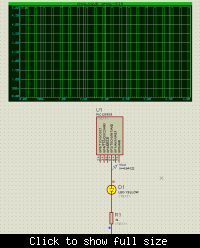Spligo
Newbie level 4
pwm frequency
i need to generate the lowest possible PWM frequency using a PIC16F877. I've tried using maximum values for PR2(i.e 255) and to slow down Timer2 with a prescale option of 1:16, but I can only go down to 247Hz.
I'm using a crystal oscillator of 4MHz and assembly as a programming language...
PLS HELP!!
i need to generate the lowest possible PWM frequency using a PIC16F877. I've tried using maximum values for PR2(i.e 255) and to slow down Timer2 with a prescale option of 1:16, but I can only go down to 247Hz.
I'm using a crystal oscillator of 4MHz and assembly as a programming language...
PLS HELP!!
